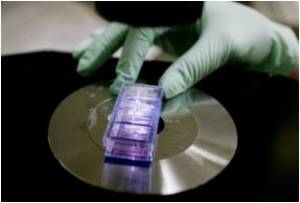
"It was previously thought that messenger proteins were only involved in directional movement: that without them, cells could only move randomly, through the spontaneous formation of these hand-like projections," says Peter Devreotes, Ph.D., professor and director of the Department of Cell Biology at the Johns Hopkins University School of Medicine. "Now we know that even random movement requires the activation of the messenger protein network."
According to Devreotes, a key component of a cell's machinery is a crisscrossing network of protein chains that wrap around the inside edge of the cell, giving it shape and structure and inspiring the name "cytoskeleton." To allow movement, this network must build itself up in a given area of the cell, pushing the cell's membrane outward and creating a hand-like projection that can "grip" the external environment and pull the cell forward.
The cytoskeleton, Devreotes says, takes orders from the messenger protein network, which is connected to sensor proteins on the outside of the cell. The sensors detect directional signals coming from other parts of the body and pass them on to the messenger proteins, which in turn call on the cytoskeletal proteins to create a projection in the right direction.
In their experiments, the Devreotes team sought to understand the relationship between each of these components. They began, he says, by bathing their cells in a drug that paralyzes the cytoskeleton. Not surprisingly, the cells wouldn't move, but the spontaneous responses of the messenger network still occurred.
Devreotes explains, "You can think of the cell as a row boat with several crewmen and a coxswain, sitting in the rear, steering the rudder and shouting at the crew to keep their movements in sync. If the oars are taken away (i.e., a paralyzed cytoskeleton), the coxswain can yell at the crew as much as he wants but the boat won't move."
Advertisement
The team expected that when they removed the sensor proteins they would see no movement, based on the old idea that both random and directional cell movement required signaling from these proteins. However, they found instead that the messenger network is "excitable." That is, without the sensor proteins or external cues, the messenger proteins can still work on their own, telling the cytoskeleton to create projections here or there, moving the cells about randomly. "This situation could be compared to a boat without a rudder. The coxswain is there to coordinate the rowing of the crew so the boat does move, but not in any specific direction," explained co-author Ming Tang.
Advertisement
Source-Eurekalert









